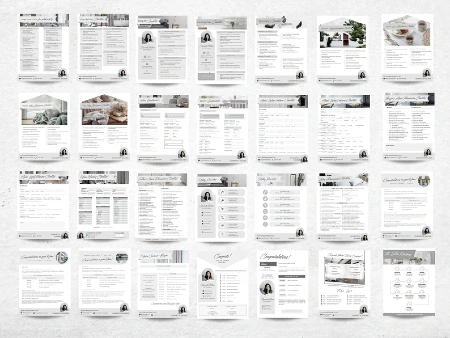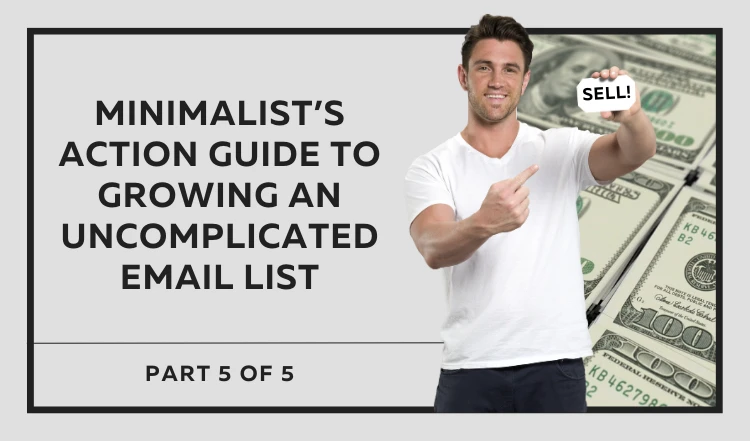Choosing the right type of lead magnet can make or break your efforts to attract and convert your ideal audience.
Your lead magnet should be based on the topic you’ve chosen and the needs of your audience.
If you’re teaching something visual, such as how to create YouTube videos, a video lead magnet may be the best option.
On the other hand, if your topic is more text-based, a simple PDF guide could be a great choice.
Despite the popularity of videos, PDFs still have a high conversion rate, and they’re a favorite of many course creators.
However, to make your PDF more appealing, consider renaming it to something more engaging and attractive, such as an action guide, blueprint, toolkit, playbook, workbook, or strategy.
This not only makes it sound more valuable, but it also creates a sense of anticipation in your audience, making them more likely to download and consume it.
When deciding on the type of lead magnet to create, remember to keep your audience and their preferences in mind.
It’s important to understand what type of content they enjoy consuming and what format resonates best with them. This ensures that you’re creating a lead magnet that your ideal audience will find valuable, engaging, and ultimately, converting.
Lead Magnet Formats
Cheat Sheets
Cheat sheets are a popular and effective type of lead magnet. They offer a simplified version of a larger topic, giving readers a quick and easy-to-follow guide to the most important steps or information.
Pros:
- Offers simple steps that are easy to follow.
- Uses eye-catching design to grab the reader’s attention.
Cons:
- Can’t go deep into the topic or provide comprehensive information.
If you have a complex course topic that can be simplified into a few key steps, a cheat sheet may be the perfect lead magnet format for you.
Webinars
Webinars are a great way to build trust with your audience and provide them with valuable information. They are a live, interactive event that allows you to connect with your audience in real-time and answer their questions.
Pros:
- Builds trust with your audience.
- Provides valuable information and learning experience.
- Allows for live interaction and Q&A.
Cons:
- Requires more time and effort to create and host.
- Can have technical difficulties or issues with audience engagement.
If you have a course topic that requires a more in-depth understanding or that could benefit from live interaction, a webinar may be a great choice for your lead magnet.
Checklists

Checklists are a simple but effective type of lead magnet. They provide readers with a list of steps or items to complete, making it easy for them to act and see results.
Pros:
- Provides clear, actionable steps for readers to follow.
- Can be visually appealing and easy to read.
Cons:
- May not offer a lot of in-depth information or analysis.
- Can be limited to specific topics or industries.
If your course topic requires readers to complete specific tasks or take action in a certain way, a checklist can be an excellent way to present this information.
Templates
Templates are a type of lead magnet that provide readers with a pre-designed document or tool that they can use for their own purposes. This can include things like email templates, spreadsheet templates, or even printable planners.
Pros:
- Provides a tangible tool or resource for readers to use.
- Can save readers time and effort in creating their own documents.
Cons:
- May not be relevant for all course topics or industries.
- Can be time-consuming to create and customize for individual readers.
If your course topic involves a lot of practical or hands-on work, or if your audience is looking for a tool to help them with a specific task, a template may be the perfect lead magnet format for you.
Worksheets or Workbooks

Worksheets are a valuable tool to help readers put theory into practice. They allow readers to work through problems or apply concepts to their own life or business.
Pros
- Helps readers apply what they’ve learned.
- Can be customized to specific topics or audiences.
Cons
- May require a time commitment from readers to complete.
- Can be overwhelming if too much information is included.
If your course requires readers to act or work through exercises, a worksheet can be a great lead magnet to offer. Just be sure to keep it focused on one or two key concepts, and not overwhelm readers with too much information.
Guides
Guides are a popular type of lead magnet that provide readers with in-depth information on a specific topic. They often go beyond what a checklist or worksheet can offer and provide a more comprehensive overview.
Pros
- Can establish you as an authority on a topic.
- Can be shared widely and used as a reference.
Cons
- Can take more time and effort to create.
- May not be as visually appealing as other lead magnet types.
If your course covers a complex or comprehensive topic, a guide may be the perfect lead magnet to provide readers with a complete overview. Just be sure to make it visually appealing and easy to read, and provide valuable information that readers can’t find elsewhere.
Quizzes
Quizzes are a fun and interactive way to engage readers and provide personalized insights. They can be used to assess knowledge, personality traits, or other characteristics related to your course topic.
Pros
- Can be highly engaging and interactive.
- Provides personalized results to readers.
Cons
- May not provide a lot of actionable information.
- Can be time-consuming to create.
- Can be cumbersome and requires specialized software to manage it.
If your course covers a topic that can be presented in a fun and engaging way, a quiz may be the perfect lead magnet. Just be sure to keep it relevant to your course topic and provide valuable insights that readers can use.
Mini-Courses
Mini courses are a more extensive type of lead magnet that provide readers with a sample of what your course has to offer. They may include videos, worksheets, or other resources, and are often delivered over several days or weeks.
Pros
- Provides a sample of what your course offers.
- Allows readers to get a taste of your teaching style.
Cons
- Requires a significant time investment to create.
- May not be as effective if your course doesn’t lend itself to a mini-course format.
If your course covers a topic that can be broken down into smaller, manageable pieces, a mini-course can be an effective lead magnet to offer. Just be sure to keep it focused and provide valuable information that readers can use right away.
In conclusion, creating a lead magnet that resonates with your target audience is essential for building a loyal and engaged email list.
By offering a valuable piece of content in exchange for their contact information, you can establish trust and credibility with your potential customers.
When deciding on the format of your lead magnet, consider your audience’s preferences, your course topic, and your goals for your email list.
Whether you choose a cheat sheet, worksheet, guide, quiz, mini-course, or another format, make sure that it is relevant, valuable, and easy to consume.
Remember that the ultimate goal of your lead magnet is to provide a first step towards solving your audience’s problem and leading them towards your course.
Keep this in mind and create a lead magnet that offers a quick win while also leaving your audience wanting more.
By utilizing these different lead magnet formats and tailoring them to your specific audience and course, you can effectively grow your email list, increase conversions, and ultimately see success in your online business.





